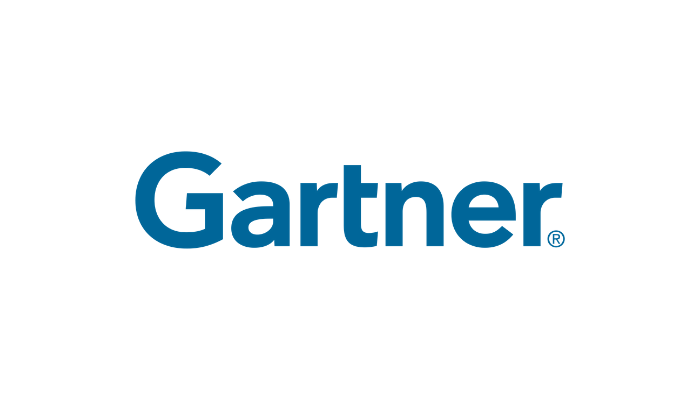This is the second part of a two-part series focusing on overcoming challenges in the B2B buyer journey. Check out Part One here.
The Gartner Sales and Marketing Conference 2018, focused on B2B “buyer enablement,” or, “the provision of information that supports the completion of critical buying jobs.”
On Oct. 9, Brent Adamson, distinguished VP, Gartner, outlined buyer enablement challenges. On the customer side, buyers are faced with increasingly complex customer journeys that often involve multiple stakeholders, and plenty of red tape. On the supplier side, vendors struggle with aligning Sales and Marketing teams, and shifting efforts from a linear handoff model to a more integrated process.
The rest of the conference focused practical strategies to help make the buying process easier for both customers and vendors. Here are seven key takeaways:
Identify pain points, and get in front of them
The foundation of buyer enablement is providing customers with the information they need to make decisions quickly and effectively. Vendors are in a unique position here, because they’re able to view buyer journeys from the outside. This gives vendors an opportunity to get in front of potential customer pain points early, and serve as a guide for buyers who may not be aware of potential roadblocks ahead.
“You’re selling this stuff all the time…look at other deals, and what to anticipate,” Adamson said. By providing guidance, you’re making the customer’s journey easier, while eliminating potential headaches that could slow down the sales cycle, too.
“Our intention is to get them to ask questions they wouldn’t necessarily ask on their own,” Adamson said.
Don’t overwhelm with information
Keeping customers informed is the goal, but it has to be done strategically. Flooding your customers with content can make the process more difficult. Focus on delivering content that directly addresses the information they’re looking for. Map out the buyer journey first, and then build a content strategy to support it.
Make resources easily accessible
Customers need a clear path to the information they’re searching for. If buyers can’t find the content they need to validate their decisions, Adamson says, the process can stall. Make sure information is easy to find through both sales and digital channels. Your company website can be a huge asset here.
“Help customers do what they’re on your website to do,” Adamson said. Traditionally, websites were built primarily for brand awareness. By building your website for customer centricity, you can provide a better, more productive experience.
Adamson suggests breaking up your website into sections based on customer type and pain point, with an interface that’s easy to navigate. You also want to “speak in your customer’s language,” which means ditching the jargon. Position yourself as an ally, make the conversation about addressing customer needs, and build education into the buying journey.
“Articulate challenges in the language your customers would see themselves in,” Adamson said.
Leverage buyer enablement tools
According to Adamson, buyer enablement tools give customers direct resources to address pain points in an actionable way. Adamson broke down these tools into seven distinct categories:
- Calculator: Help customers calculate potential success by crunching numbers quickly. For example, showing buyer how much profit they could gain, or revenue they’re missing out on.
- Benchmark: Showcasing how competitors are leveraging your tool for success.
- Diagnostic: Helping customers identify their own pain points, through a series of questions. According to Adamson, this is the “single most important” tool because it helps internal stakeholders shape their own opinions about where they need to be as a company.
- Simulator: An interactive model that shows how your solution actively works within an organization.
- Recommender: A quiz or series of questions that can help customer identify pain points and recommend solutions.
- Connector: An informed resource to help guide customers to the information they’re looking for.
- Advisor: Content designed to give suggestions and help educate consumers with actionable advice.
Keep assets consistent across Marketing and Sales
As we mentioned yesterday, customers are “channel agnostic,” which means they look to both your sales and digital (marketing) channels to find information. Understanding how your customers interact across all your channels is key here, so you can ensure you’re providing the right information at the right time.
Ask for feedback
Building the right type of buyer enablement strategy is a complex process. The best way to get started is by talking to your customers. Ask for feedback so you can understand their needs, and identify ways you can make your process better.
“What do you know now that you wish you learned back then? What did they not like about us, [and] what did we get wrong?” Adamson said.
Enable purchase decision affirmation
The goal of buyer enablement is to help ensure customers feel confident about the solution they’re investing in. According to Rick DeLisi, senior advisor, Gartner, a successful customer experience enables “purchase decision affirmation.”
DeLisi gave some examples of successful buyer sentiments, including:
- Showing customer accomplishments
- Enabling exploration
- Guiding customers to success
- Allowing customers to control their own schedules
- Freeing up time
- Letting customers participate in shared experiences
- Reducing momentary uncertainty
- Providing added bonus
These sentiments closely match the goals of the buyer enablement tools listed above, tying outcomes to efforts.
“[It’s] not just what customers say about us [as vendors], but what customers say about themselves to do business,” DeLisi said.








